Are you looking to monetize your photography skills and wondering where to sell your photos online? Whether you’re a seasoned professional or a hobbyist eager to generate passive income alongside your photography pursuits, numerous online platforms can connect you with a vast market seeking high-quality stock images.
Stock photo websites serve as intermediaries, licensing your photographs to businesses, agencies, and individuals in need of compelling visuals for commercial purposes. In exchange, you receive a portion of the revenue generated from these licenses.
This guide explores 15 of the leading websites for selling your photos online, providing a comprehensive step-by-step approach to transform your photographic content into a profitable venture.
Top Websites for Selling Photos Online
1. Alamy
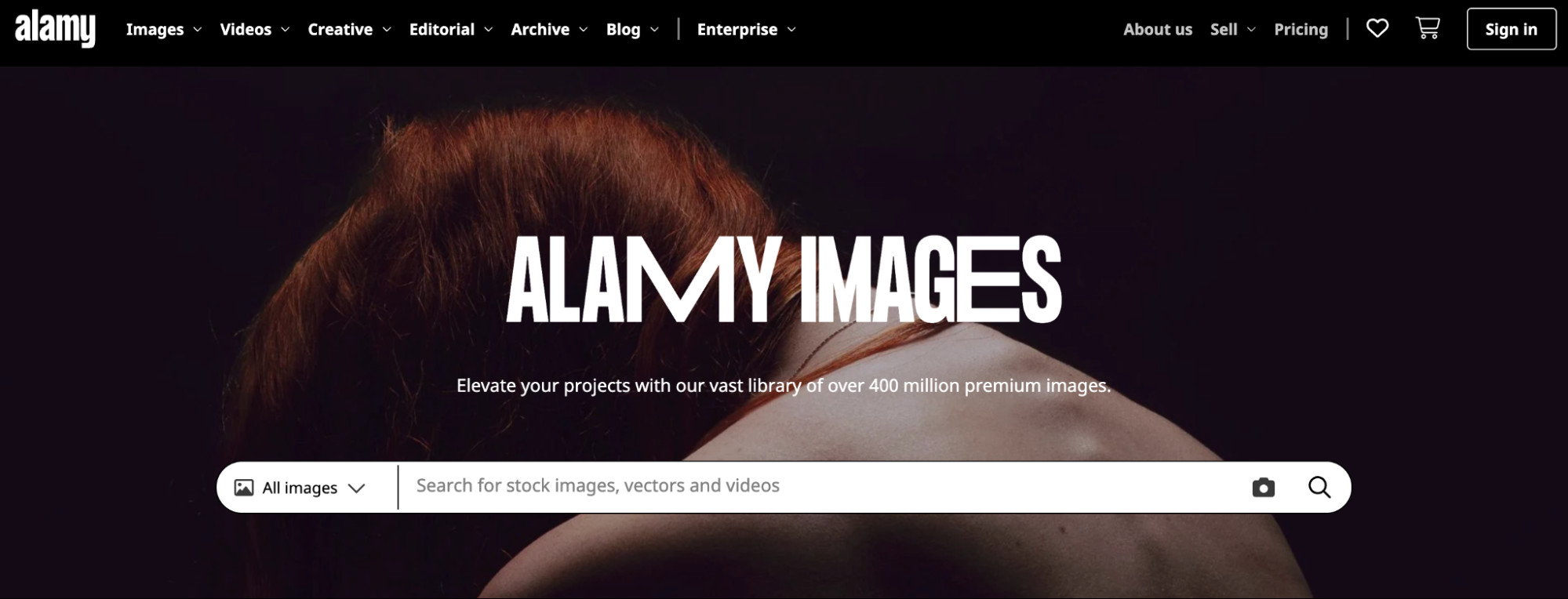 Alamy Images homepage displaying a search bar for users to find royalty-free stock images.
Alamy Images homepage displaying a search bar for users to find royalty-free stock images.
Alamy stands out with its extensive and diverse collection of stock photos, making it a prime destination to sell your photos online. Boasting millions of stock images, vector graphics, videos, and immersive 360-degree panoramic images, Alamy offers numerous avenues for photographers to contribute their work. They even provide an intuitive iOS app, Stockimo, empowering you to sell photos directly from your smartphone.
Payment Structure
Alamy provides monthly payouts to its contributors, with varied commission structures tailored to image popularity and license type. Photographers can earn between 17% and 50% of each sale. Alamy is known for its flexible terms, offering no long-term contracts and facilitating payments in multiple currencies.
2. 500px
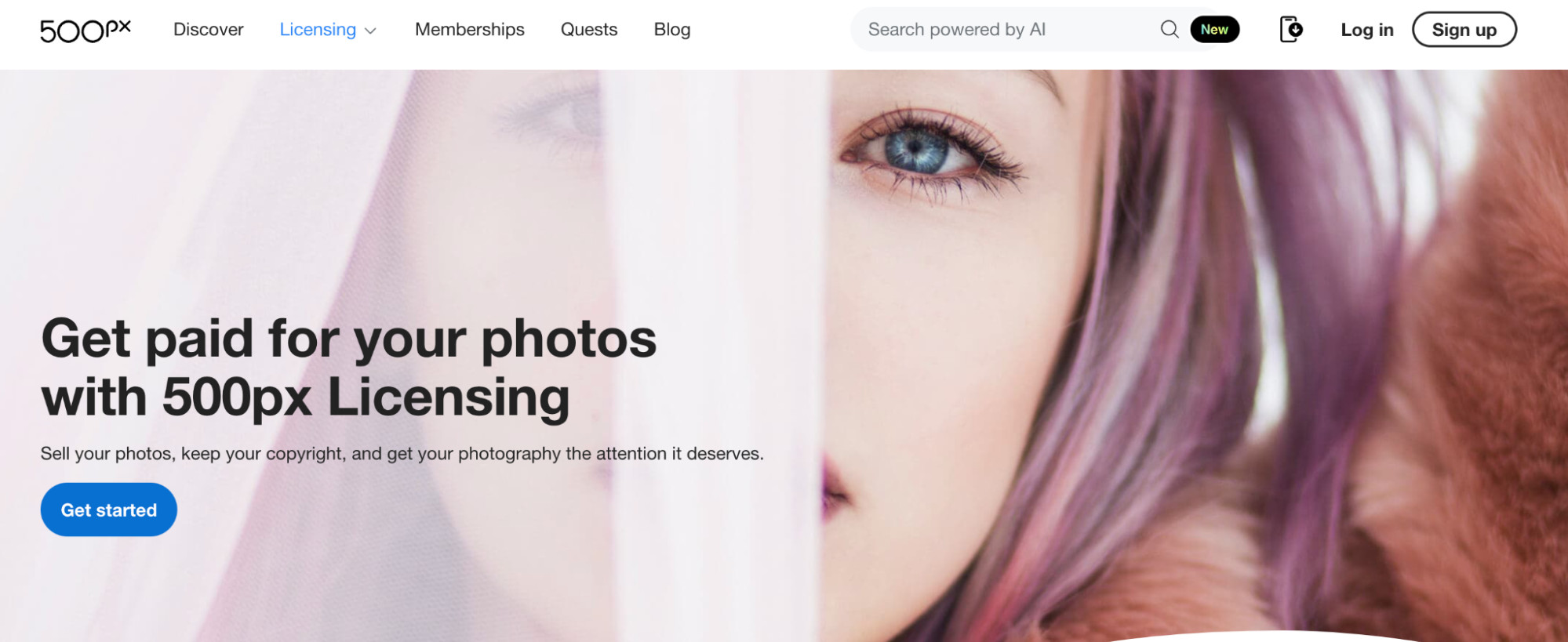 500px’s homepage showcasing opportunities for contributors to earn money by licensing their photographs.
500px’s homepage showcasing opportunities for contributors to earn money by licensing their photographs.
500px uniquely blends stock photo licensing with a vibrant photographer community, creating a compelling platform to sell photos online. Hosting millions of photographers who actively sell and license their work, 500px utilizes its proprietary Pulse algorithm to highlight emerging photographers and fresh content to potential buyers. This algorithm offers a valuable opportunity for photographers who are newer to stock photography to gain visibility, provided their images meet the platform’s established quality benchmarks.
Beyond being a marketplace for selling photos, 500px fosters an engaging online community for both amateur and professional photographers. Users can connect with fellow creatives, receive constructive feedback on their portfolios, list photos for sale in the marketplace, and even participate in photography contests for recognition and prizes.
Payment Details
For exclusive photos, paying members on 500px can earn up to an impressive 100% royalty, making it a potentially lucrative platform for committed contributors.
3. Shutterstock
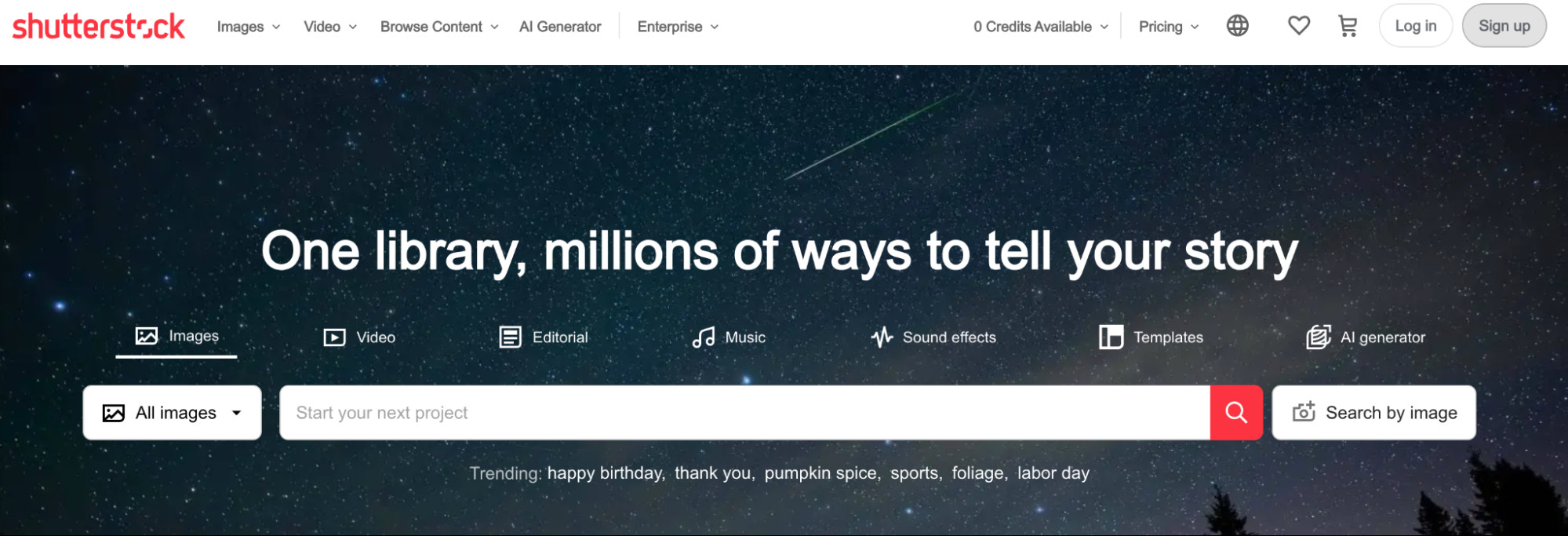 Shutterstock homepage displaying options to find royalty-free images, videos, and music.
Shutterstock homepage displaying options to find royalty-free images, videos, and music.
Shutterstock stands as one of the most recognized and widely used stock photography websites globally, offering a robust platform to sell photos online. A prominent player in the industry, Shutterstock has distributed over $1 billion to its contributor community over the past 15 years, demonstrating its scale and commitment to photographers.
Shutterstock operates as a micro-stock site, characterized by offering photos at more affordable prices and under non-exclusive licenses. Success on Shutterstock often hinges on contributing a large volume of images to increase download potential. While individual image earnings may be lower compared to some platforms, the high volume and broad reach of Shutterstock make it an excellent starting point for photographers learning the nuances of selling stock photos.
Payment and Affiliate Programs
Payout rates on Shutterstock are tiered, ranging from 15% to 40%, and are determined by earnings accumulated over time. Additionally, Shutterstock features an affiliate program, providing an avenue to earn supplementary income by referring new photographers or customers to the platform.
4. Getty Images
 Getty Images’ homepage with a search bar enabling users to find various photos and images.
Getty Images’ homepage with a search bar enabling users to find various photos and images.
Getty Images is synonymous with premium stock photography, attracting high-profile brands and online publishers seeking exclusive, high-quality, and often hard-to-find images for licensing, making it a desirable platform to sell your best photos online. Getty Images, along with its microstock subsidiary, iStock (detailed below), collectively reaches over 1.5 million customers worldwide, showcasing its extensive market presence.
Maintaining its esteemed reputation within the publishing and advertising industries, Getty Images upholds stricter standards for photographers looking to sell their work on the platform compared to many other stock photo sites.
Application and Earnings
To become a contributor to Getty Images, photographers must apply with a portfolio of sample photographs. Upon acceptance, contributors can earn between 15% and 45% of an image’s license fee, reflecting the platform’s premium pricing and exclusivity.
5. iStock
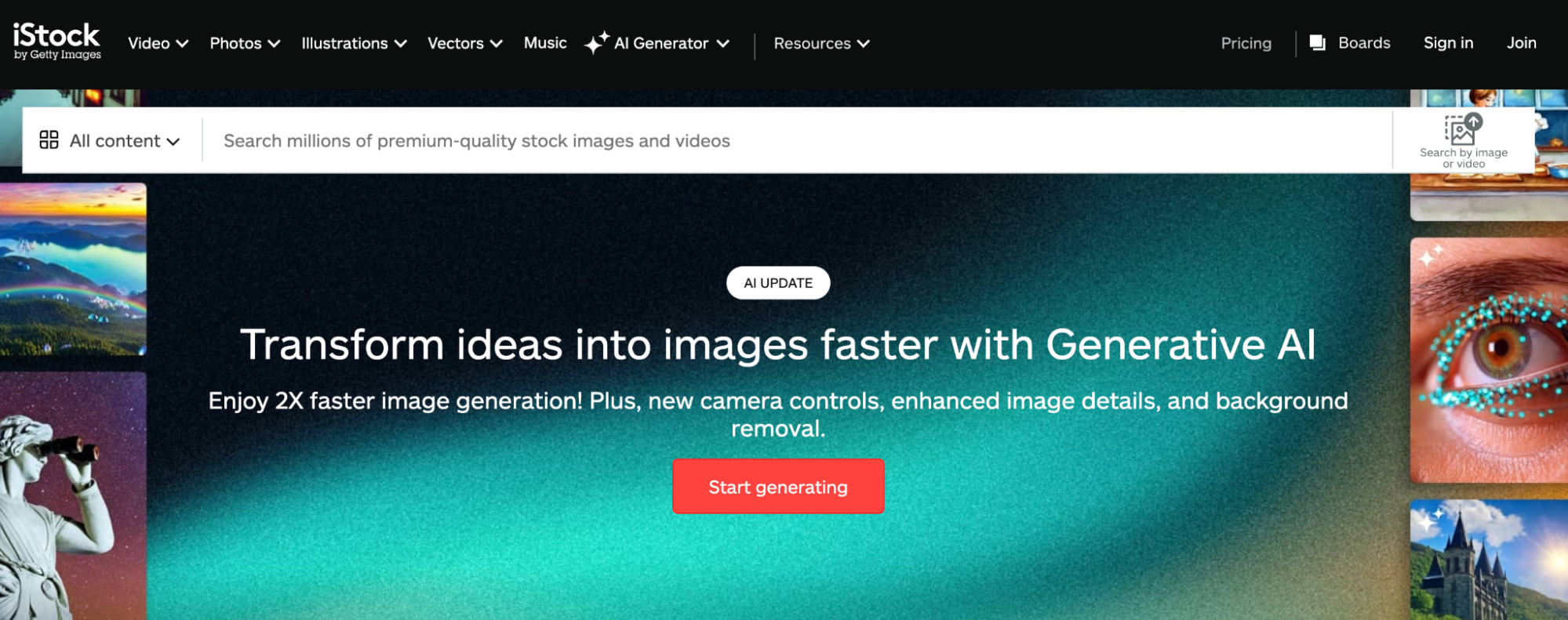 Landing page for iStock highlighting its generative AI-powered image creation tool.
Landing page for iStock highlighting its generative AI-powered image creation tool.
iStock operates as a non-exclusive contributor alternative to its parent company, Getty Images, offering a different avenue to sell photos online. As a subsidiary of Getty Images, iStock shares its market reach but distinguishes itself by primarily offering non-exclusive licensing options for photographs. This key difference means photographers can sell the same images on iStock and other stock photography agencies simultaneously.
Application and Commission Structure
To begin selling photos on iStock, photographers need to submit an application along with a selection of sample images for review. Similar to Getty Images, commissions on iStock range from 15% to 45%, varying based on contributor agreements and exclusivity status.
6. Stocksy
 Stocksy homepage featuring an artistic graphic of people in a library setting.
Stocksy homepage featuring an artistic graphic of people in a library setting.
Stocksy presents an accessible and ethical platform, especially appealing to photographers seeking to sell photos online while prioritizing fair compensation and community. Stocksy distinguishes itself by offering higher payout rates to contributors compared to many stock photography sites. Photographers on Stocksy can earn a 50% royalty for standard licenses and an even higher 75% royalty for extended licenses. However, exclusivity is a requirement, meaning photos sold on Stocksy must be exclusive to the platform.
Uniquely, Stocksy operates as an artist-owned cooperative. This structure means contributors are not just sellers but also part owners of the business, granting them a voice in the platform’s direction. Furthermore, when the cooperative achieves a surplus, contributors may receive profit-sharing in the form of patronage returns.
Payment and Application Information
Stocksy pays its contributors monthly via PayPal, Payoneer, or check, with a minimum payout threshold of $100. For photographers interested in selling photos on Stocksy, their contributor application FAQ provides valuable insights and guidance.
7. Picfair
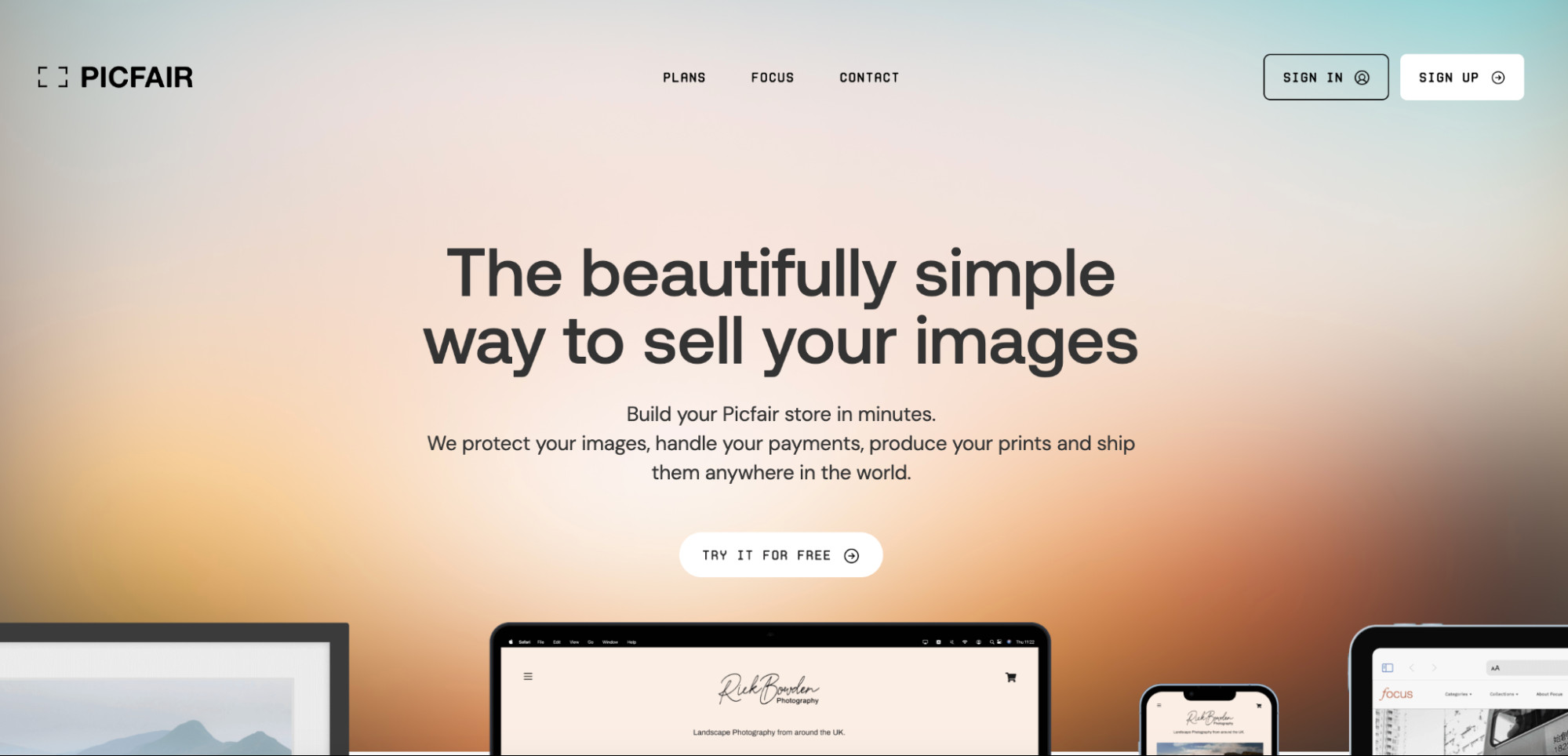 Picfair landing page promoting a website builder specifically designed for photographers.
Picfair landing page promoting a website builder specifically designed for photographers.
Picfair provides a unique approach, empowering photographers to establish their own photography e-commerce website, offering greater control over how they sell photos online. Picfair is particularly well-suited for photographers who desire a high degree of control over their online photo portfolio and brand. The platform allows you to set your own prices for both prints and digital downloads, and Picfair manages payment processing on your behalf. Additionally, Picfair handles print production, shipping logistics, and licensing for digital images, simplifying the selling process.
Plans and Features
To utilize Picfair’s full features, photographers can sign up for a Plus plan, priced at $5 per month when billed annually. This plan enables you to create a customized Picfair store showcasing up to 10,000 images, which can be offered as prints or digital downloads, providing a comprehensive solution to sell your photos online under your own brand.
8. Adobe Stock
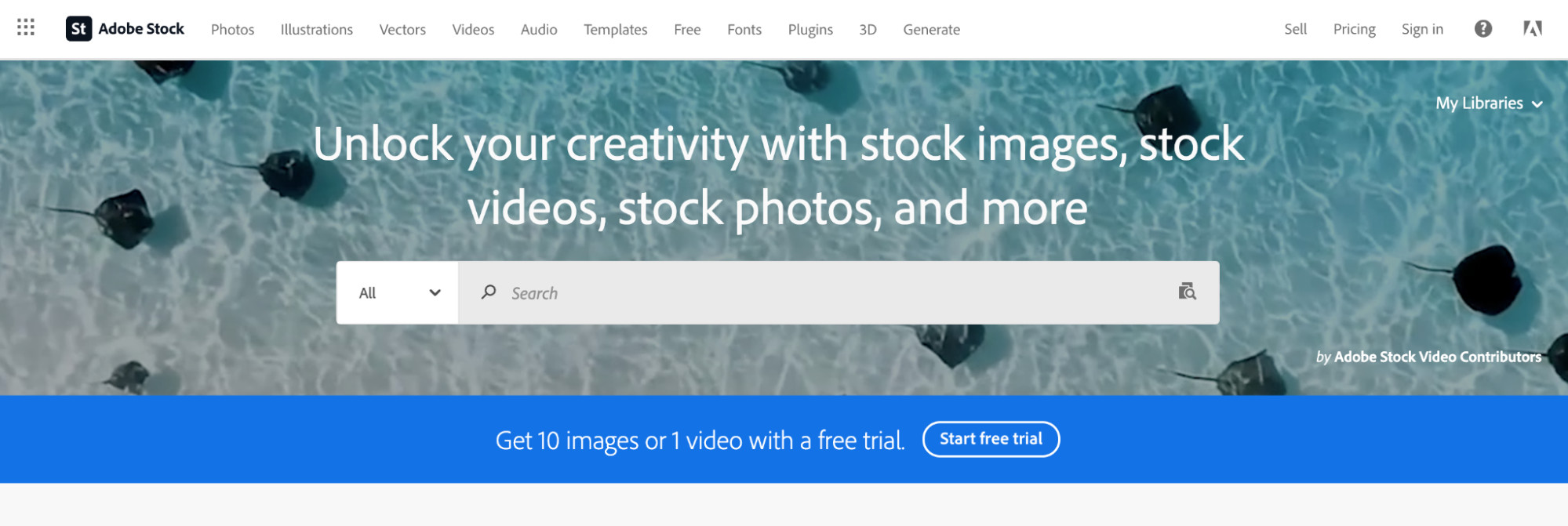 Adobe Stock homepage featuring a search bar against a backdrop of stingrays in the ocean.
Adobe Stock homepage featuring a search bar against a backdrop of stingrays in the ocean.
Adobe Stock seamlessly integrates with Adobe’s widely used suite of creative software, making it a convenient option for photographers already immersed in the Adobe ecosystem to sell photos online. If you are a regular user of Adobe software for photography projects, Adobe Stock offers a streamlined way to contribute your images, videos, vectors, and illustrations directly to their online stock photo platform.
Integration and Royalties
A key advantage of Adobe Stock is the direct upload capability from within Lightroom and Bridge upon completion of editing. Contributors who link their Adobe ID to Adobe Stock can earn a 33% royalty on photos and a slightly higher 35% on videos, making it a straightforward process for Adobe Creative Cloud users to monetize their work.
9. Envato Elements
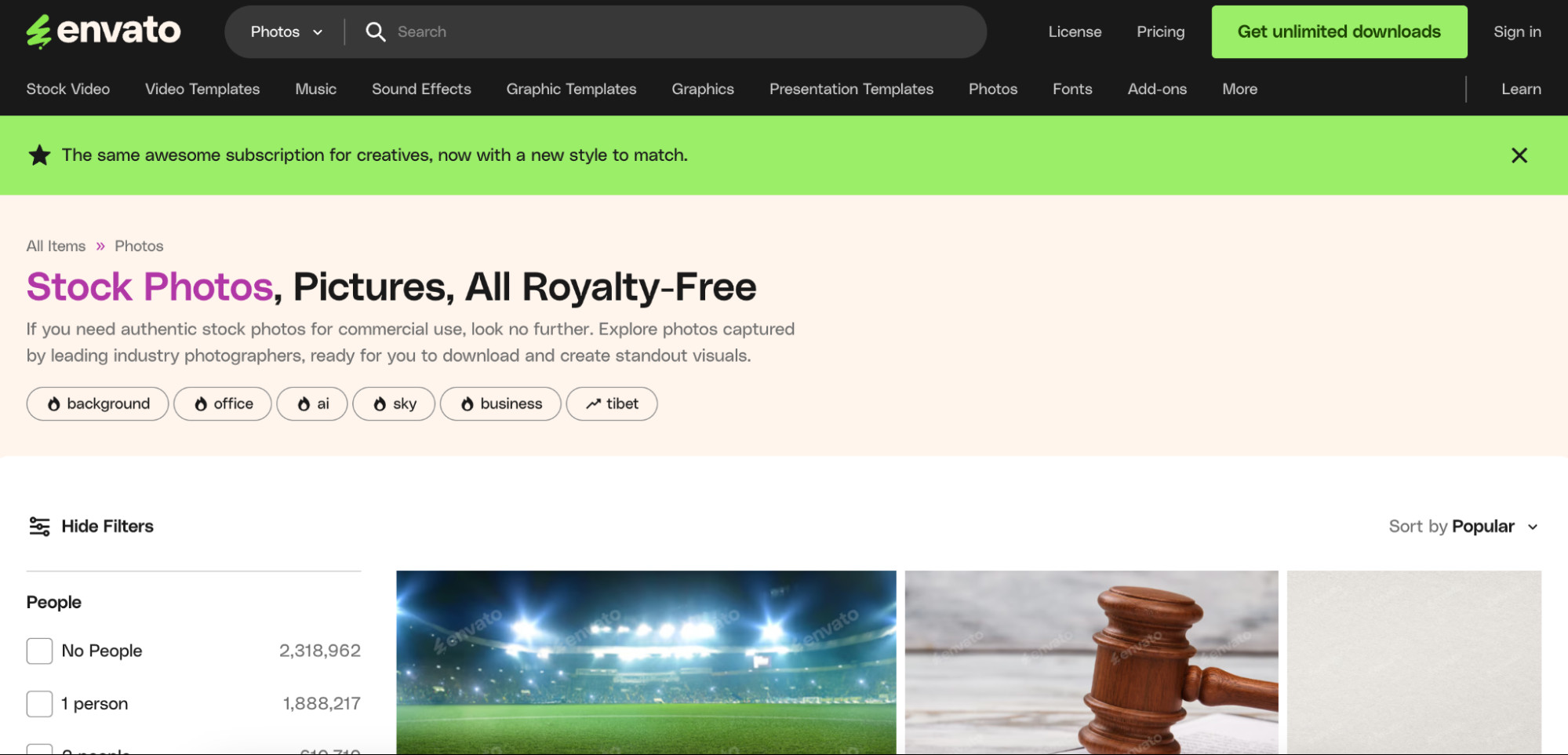 Landing page for stock photos on Envato Market.
Landing page for stock photos on Envato Market.
Envato Elements offers a subscription-based model, providing a different approach to sell photos online and tap into a recurring revenue stream. Envato Elements is a stock photography platform where contributors can sell their photos and connect with a broad base of potential clients actively seeking visual content.
With Envato Elements, photographers have the option to sell photos directly through the platform’s app or embed photos for sale on their own websites hosted on the Envato domain. Both avenues provide access to Envato’s extensive user base, making it a popular choice for photographers aiming to sell pictures and generate income from their passion.
Revenue Sharing Model
Contributors to Envato Elements earn between 25% and 50% of the net subscription revenue generated by the platform, aligning earnings with the overall success of Envato Elements’ subscription model.
10. Unsplash+
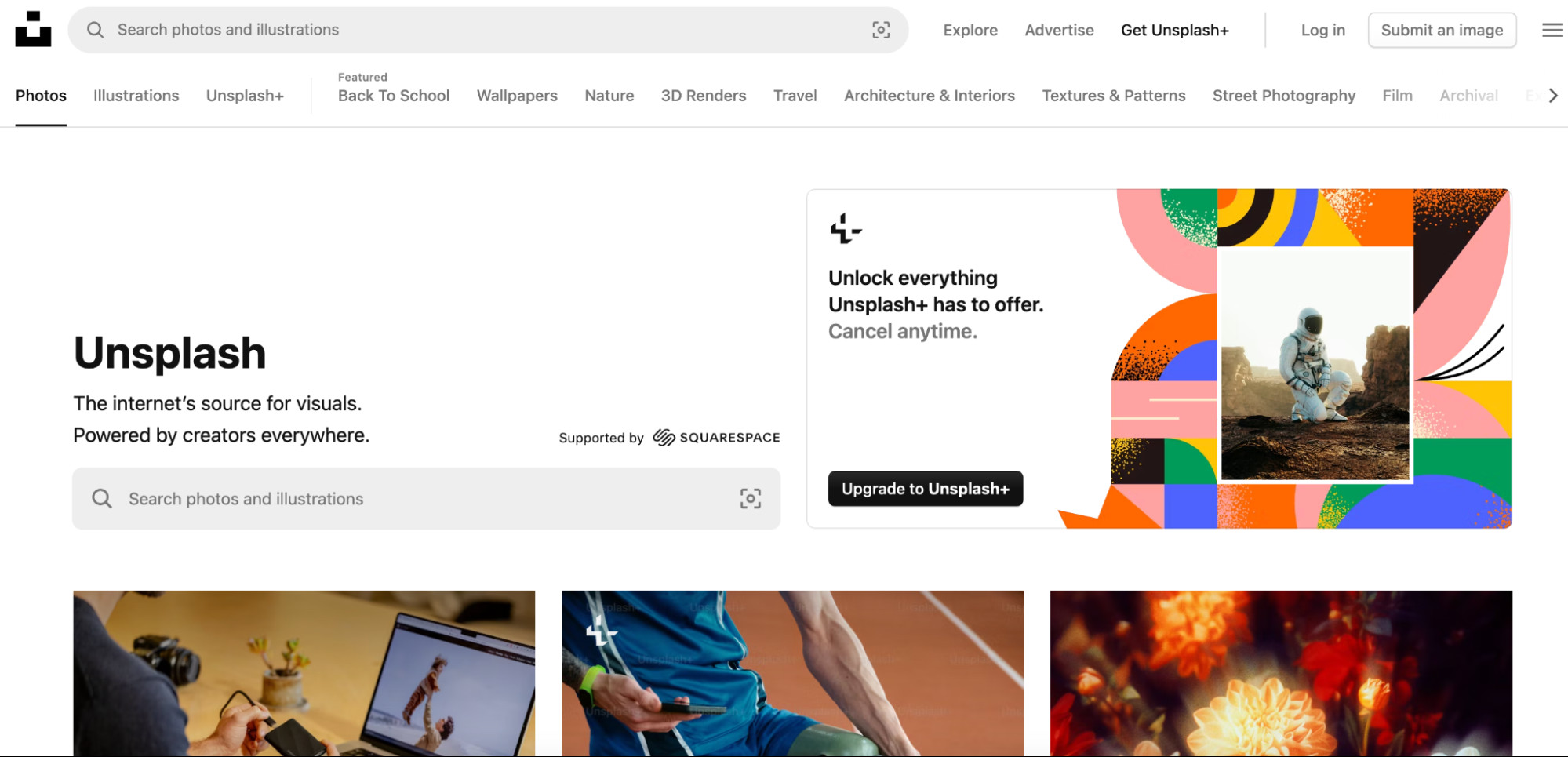 Unsplash homepage displaying stock photos and a call-to-action for Unsplash.
Unsplash homepage displaying stock photos and a call-to-action for Unsplash.
Unsplash+ presents a unique, assignment-based approach to stock photography, providing photographers with specific briefs to fulfill and get paid for their submissions, offering an alternative to traditional royalty-based platforms to sell photos online. While Unsplash is widely known as a free stock photo site (also owned by Getty Images), Unsplash+ is its premium counterpart. Instead of compensating photographers solely based on sales of individual photos, Unsplash+ operates through its contributor program, where photographers respond to specific briefs and requests from clients.
Briefs and Payment Structure
Once accepted into the Unsplash+ contribution program, photographers gain access to a list of briefs created by Unsplash customers outlining their visual needs. Photographers can select briefs that align with their skills and interests, submit relevant photos, and receive payment for each image that is accepted. Payment rates for accepted photos on Unsplash+ typically range between $5 and $30 per image, providing a direct payment model.
11. Dreamstime
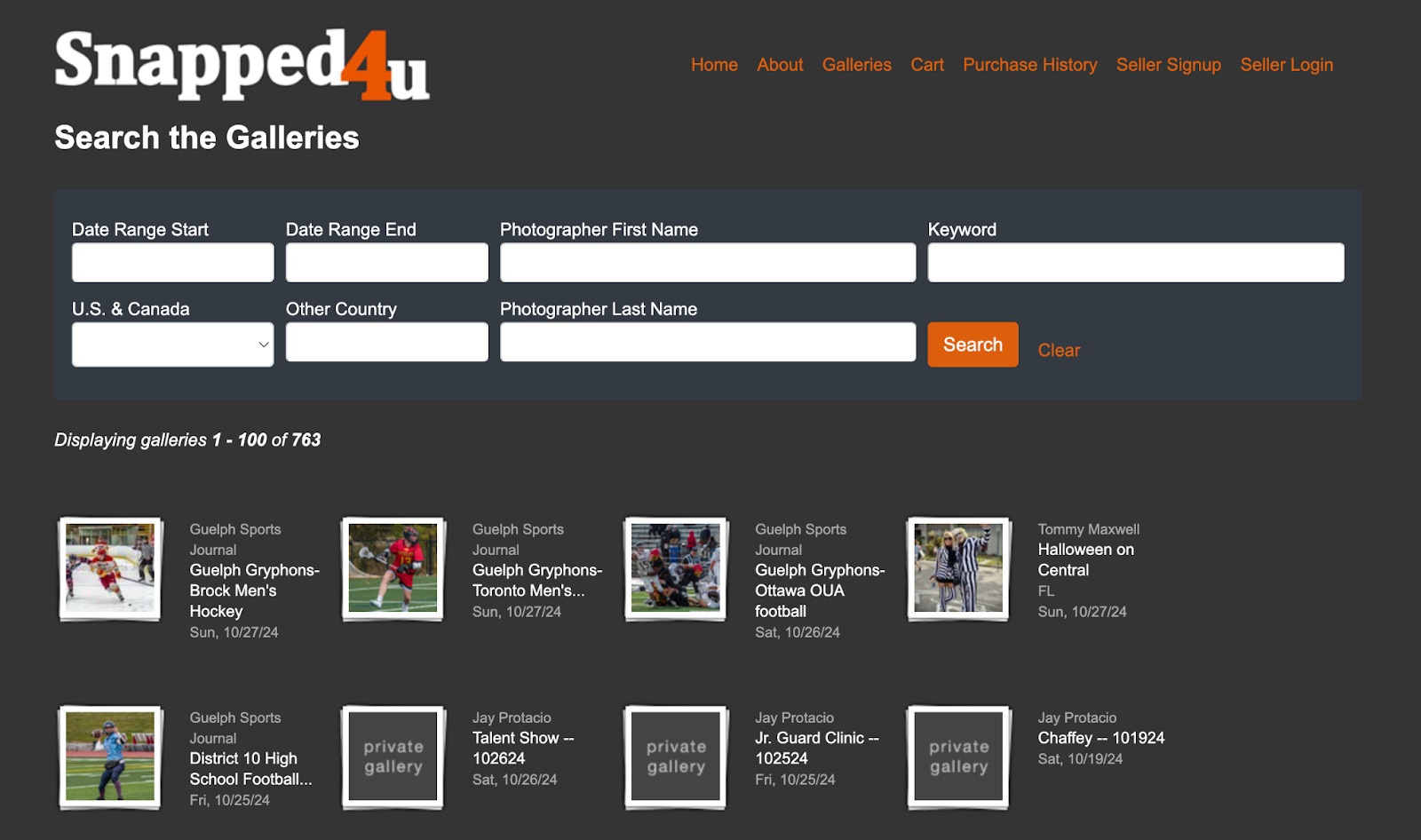 Snapped4U homepage showing photos from sports photographers.
Snapped4U homepage showing photos from sports photographers.
Dreamstime is a well-established microstock platform with an immense library, providing a large marketplace to sell photos online to a diverse global audience. Dreamstime boasts a vast collection of royalty-free media, encompassing stock photos, vector graphics, videos, and audio files. With a library exceeding 250 million files and a user base of over 50 million, Dreamstime offers photographers access to a substantial and active audience for their work.
Revenue Sharing and Affiliate Program
Dreamstime offers a revenue-sharing model ranging from 25% to 50% for non-exclusive content. Photographers who choose to contribute exclusively to Dreamstime can earn an additional 10% commission and receive a bonus of 20¢ for each approved submission. The platform also features an affiliate program, enabling contributors to earn 10% of transaction values for each new contributor or customer they refer to Dreamstime.
12. Snapped4U
 Foap creator landing page advertises a mobile app for photographers.
Foap creator landing page advertises a mobile app for photographers.
Snapped4U specializes in event and portrait photography, creating a niche marketplace to sell photos online directly to clients seeking those specific genres. Snapped4U is specifically designed for photographers who focus on portrait and event photography. It provides tools for photographers to create personalized online galleries, set their own pricing (up to $20 per image), and directly sell digital files to their clients.
This platform is tailored for photographers selling photos to individuals who attended specific events or portrait sessions. Snapped4U is not intended for general stock photography such as travel, landscape, or still-life images.
Fees and Payment Schedule
Snapped4U charges a one-time registration fee of $10 during the initial sign-up process. They also retain a commission ranging from 10% to 12% on sales. Photographers are paid their account balance via PayPal on the 1st and 15th of each month, providing a regular payment cycle.
13. Foap
 Foap creator landing page advertises a mobile app for photographers.
Foap creator landing page advertises a mobile app for photographers.
Foap directly connects photographers with brands, offering unique “missions” and a marketplace to sell photos online for commercial use. Foap is a photo-selling platform that facilitates direct sales of commercial-quality images from photographers to brands and individual buyers. A distinctive feature of Foap is its “missions” where brands outline specific photo or video requirements and offer rewards to winning submissions. To date, Foap has paid out over $3 million to its community of creators.
Missions and Marketplace Commissions
Payouts for winning photo missions on Foap range from $100 to $2,000, offering substantial earning potential for successful submissions. Photographers can also sell individual photos through the Foap marketplace. Foap retains a 50% commission on all sales made through the platform.
14. EyeEm
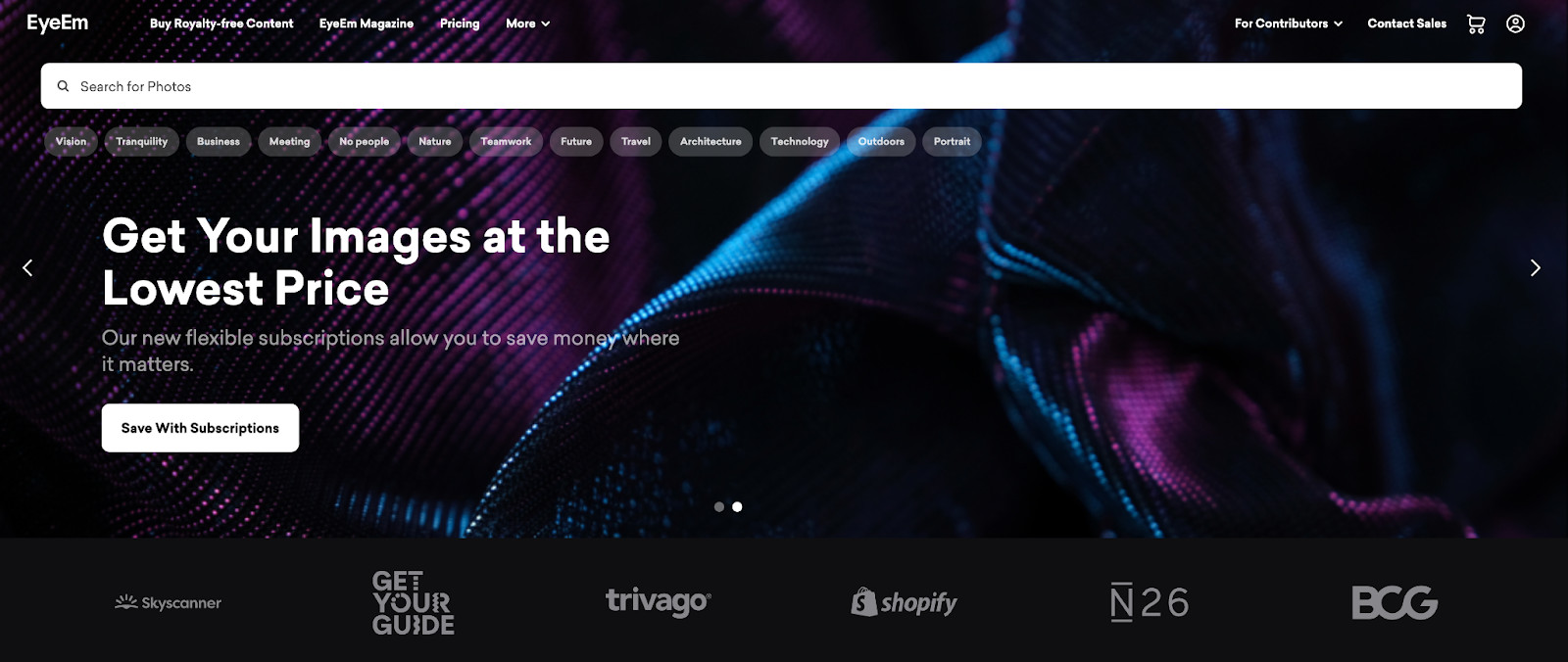 EyeEm homepage featuring a search bar and examples of high-profile clients.
EyeEm homepage featuring a search bar and examples of high-profile clients.
EyeEm merges a photographer community with a marketplace, providing opportunities to sell photos online and engage with fellow creatives. EyeEm combines a stock photo marketplace with a community environment for photographers. The platform regularly hosts “missions,” inviting photographers to submit images based on specific themes or creative briefs, fostering both sales opportunities and community participation.
Commissions and Payment Method
Contributors to EyeEm earn a 50% commission on each sale made through the EyeEm marketplace. Payments to photographers are processed via PayPal, offering a convenient and widely used payment method.
15. Pond5 (for Videos)
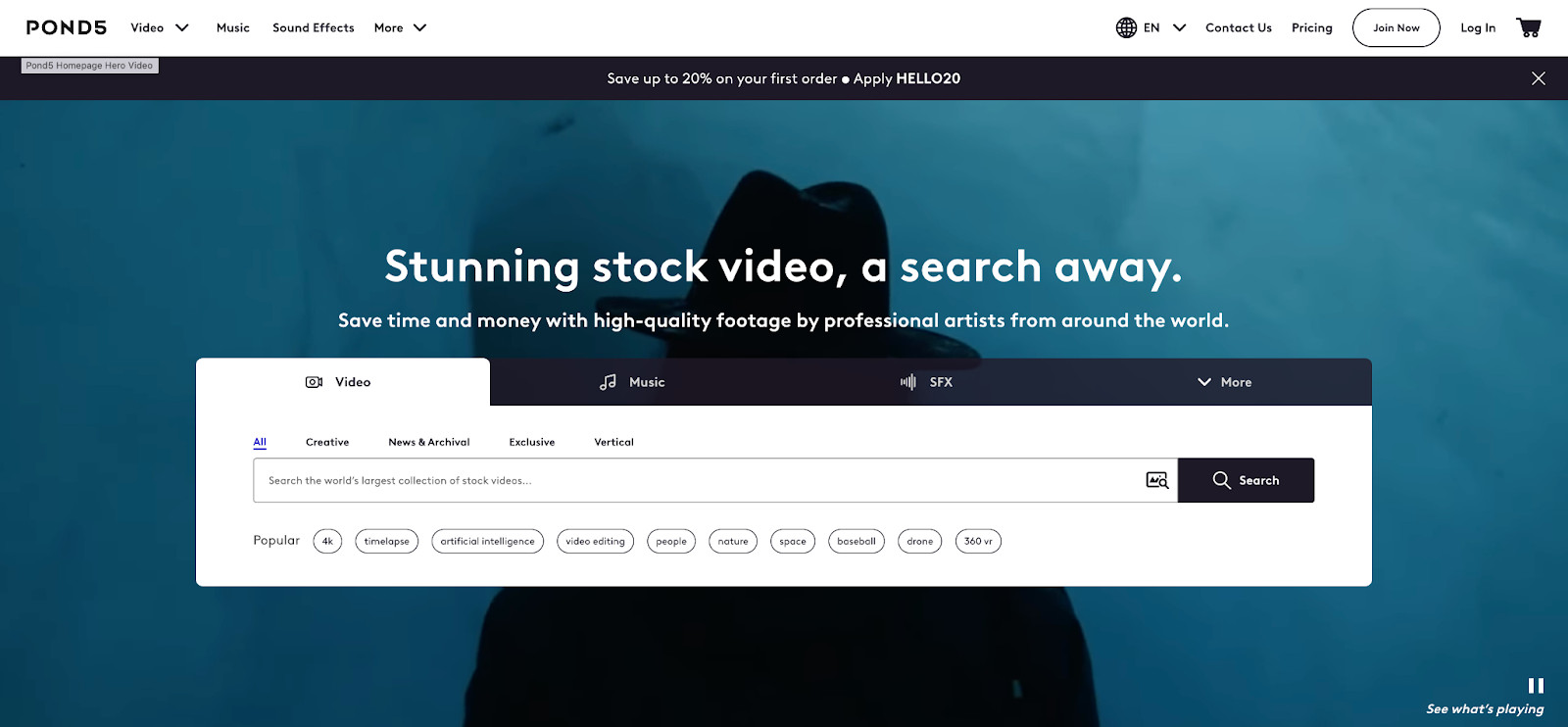 Pond5 homepage.
Pond5 homepage.
Pond5 specializes in video content, presenting a marketplace to sell stock footage online and reach major brand clients in need of video assets. Unlike the primarily photo-focused sites listed above, Pond5 focuses on being a marketplace for royalty-free videos, along with music, sound effects, and other media assets. Pond5 reports a customer base of one million, including prominent clients like the BBC and Disney, with contributor content utilized in advertisements, television programs, and feature films. Contributors on Pond5 create their own storefronts to showcase their media portfolios.
Royalties and Artist Portal
Video artists on Pond5 earn a 40% royalty share, with an option to increase earnings up to 60% by making their content exclusive to the platform. Pond5 provides an Artist Portal where contributors can respond to specific client briefs. Additionally, Pond5 offers a referral program, allowing artists to earn extra income through referrals.
Tips for Successfully Selling Photos Online
Building a thriving stock photo business requires more than just uploading images. Here are key tips to maximize your success when selling photos online:
Define Your Stock Photography Niche
Many successful stock photographers cultivate a distinctive style or thematic focus that permeates their work. Whether your passion lies in travel photography, fashion, nature, or culinary scenes, establishing consistency in your portfolio is crucial.
Often, photographers organically discover their niche by exploring styles and subjects they genuinely enjoy shooting that also resonate with target audiences. To gauge market demand for specific themes, leverage keyword research tools to analyze search volume for terms related to your photographic subjects. Google Trends is a valuable starting point to identify image topics gaining popularity.
Leverage Instagram
Similar to bloggers and YouTubers who build online presence, photographers aiming to sell images online should actively invest in audience development.
Visually-driven social media platforms like Instagram provide powerful channels to reach a broad audience. Utilize Instagram tools to strategically follow relevant accounts, engage with trending hashtags, and cultivate a following of potential customers and photography enthusiasts.
Linking your social media accounts facilitates seamless photo sharing across multiple platforms, amplifying your visibility. For example, Instagram allows you to connect your accounts to automatically post images to Facebook simultaneously, streamlining your social media workflow.
Integrate E-commerce on Your Website
Most photographers maintain a personal website to showcase their portfolio to prospective clients. By integrating a Shopify Buy Button into your website, you can directly facilitate customer purchases of stock images from your own platform.
Photographer Dave Sandford, for example, features a website store that not only displays his captivating wildlife photography but also offers prints and calendars for sale.
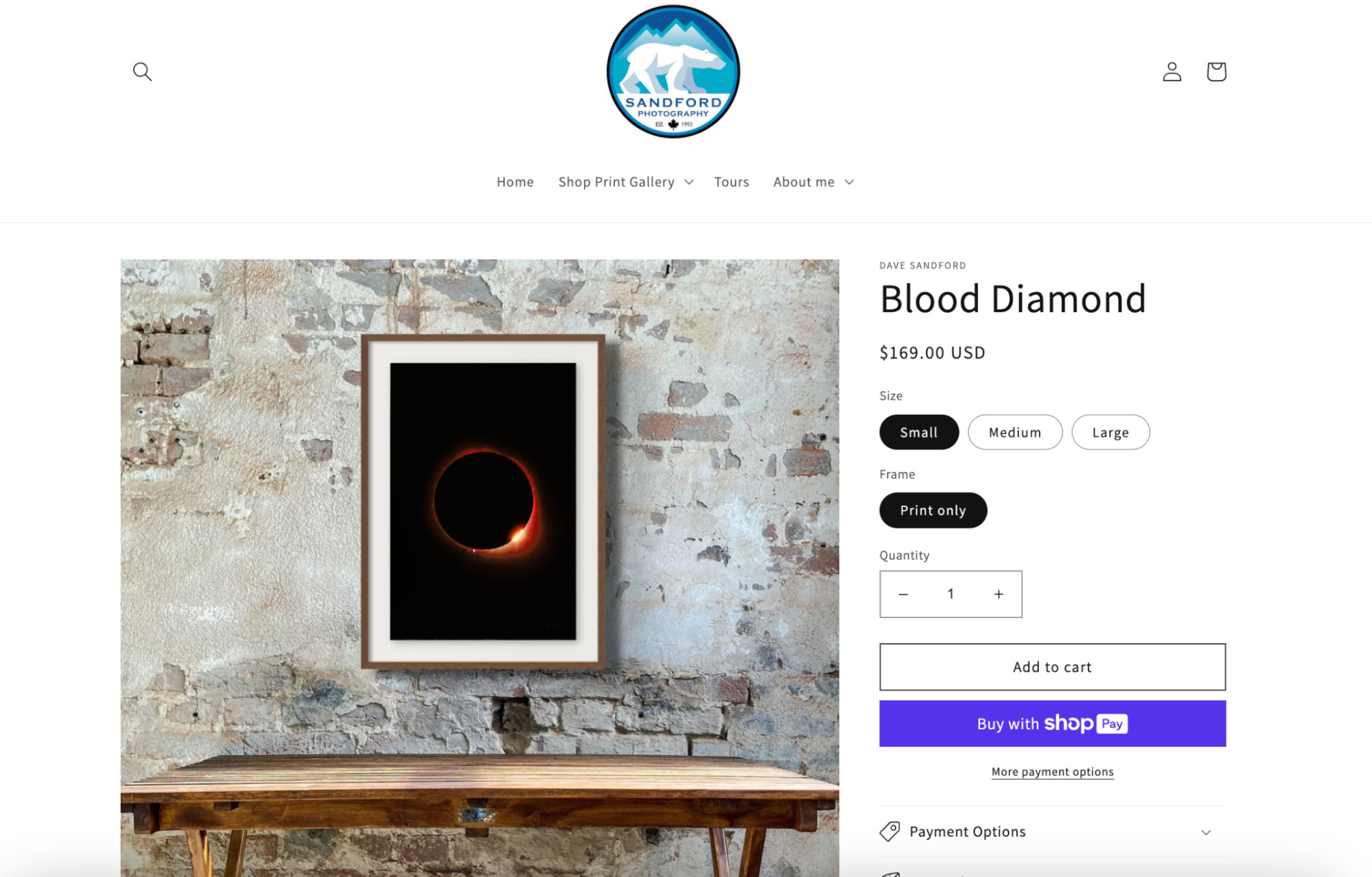 Product page showcasing a print of the moon with a red border against a black background.
Product page showcasing a print of the moon with a red border against a black background.
The most direct approach to sell photos online is to create a personalized portfolio page or online store using platforms like Shopify. Utilize pre-designed art and photography themes to quickly set up your digital showroom, or combine a free theme with a gallery app to enhance visual presentation.
Understand Your Target Market
Defining your target market – the specific group of individuals or entities most likely to purchase your photos – is essential for strategic image creation. Understanding their demographics, interests, and purchasing motivations allows you to produce photos with strong market appeal.
Consider wedding photography as an example. The primary buyers of wedding stock images are not typically engaged couples, but rather businesses operating within the wedding industry. Your target market might include wedding stationery brands or suit wholesalers seeking royalty-free images of wedding celebrations for their marketing materials.
With a clear understanding of this buyer persona, you can tailor your photography to meet their specific needs, selecting relevant platforms, and setting competitive prices that align with their budgets and expectations.
How to Establish Your Online Portfolio
Follow these steps to effectively launch your online photography portfolio and start selling your photos:
1. Choose the Right Platform
There is no single “best” platform for monetizing your photos; the optimal choice depends on your photography business goals and desired level of control over your imagery and sales process.
Here’s a concise overview of platform options based on different objectives:
- For hobbyists or those seeking small passive income: Stock photo submission sites like iStock or Alamy offer ease of use and broad market access.
- For assignment-based brand collaborations: Unsplash+ provides opportunities to fulfill brand briefs without proactive pitching.
- For maximum control over your photography business: E-commerce platforms such as Shopify empower you to build a branded store and manage all aspects of sales.
2. Structure Your Portfolio Strategically
A portfolio serves as a photographer’s visual resume, showcasing past work to potential clients and influencing their hiring or purchasing decisions.
Pay close attention to these portfolio elements:
- Layout: While photos take center stage, provide context through concise image descriptions. These mini-product descriptions can influence purchase decisions and improve search engine ranking.
- Social Proof: Incorporate social proof to demonstrate the popularity and impact of your work. Feature testimonials from satisfied clients or showcase instances where your images have been used in successful campaigns.
- Categories and Organization: Enhance user browsing by implementing clear tagging and organization. For nature photographers, create image collections categorized by location, environment, subject, and date.
- Gallery Size: Curate your online portfolio to showcase only your highest-quality images. Eliminate any photos you are not fully satisfied with, maintaining gallery sizes limited to your strongest work.
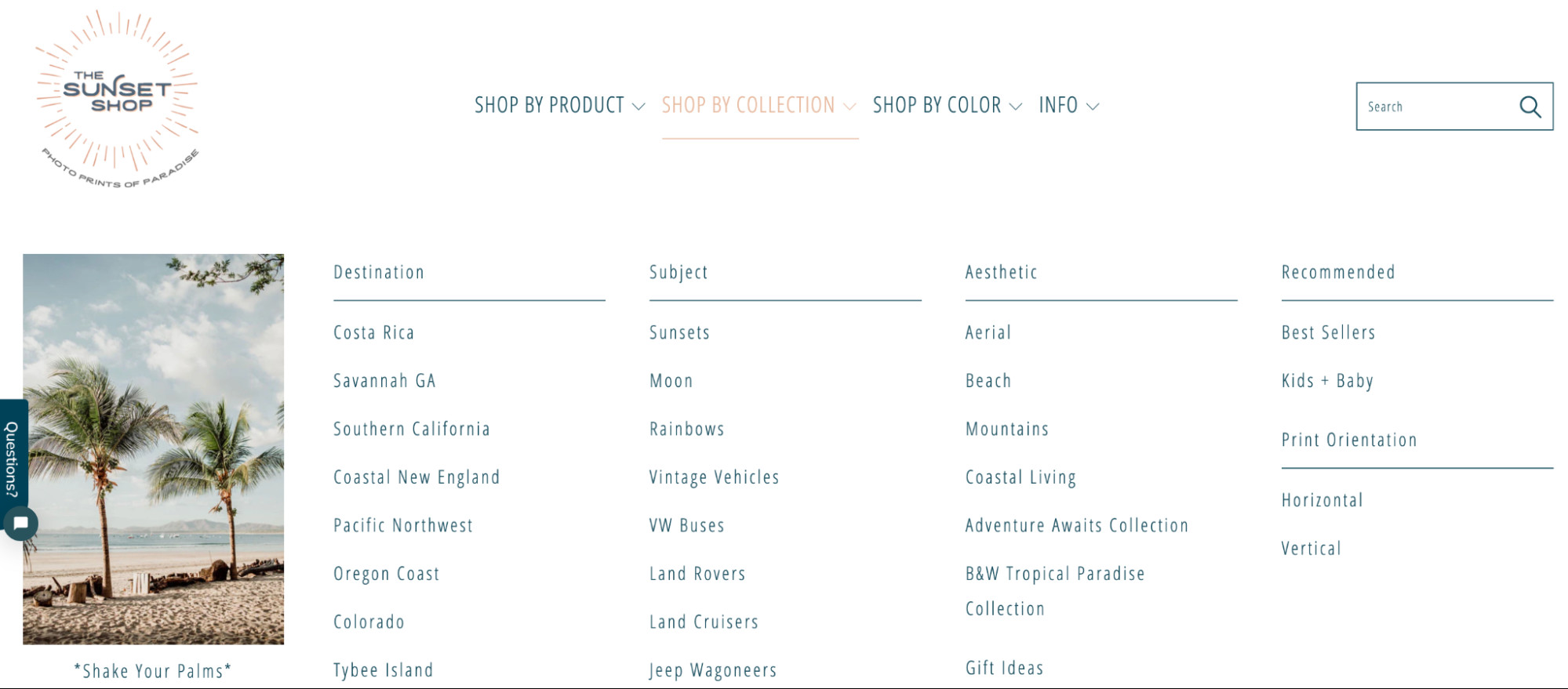 Example product categories on a photo print website including “Costa Rica”, “Sunset”, and “Mountains”.
Example product categories on a photo print website including “Costa Rica”, “Sunset”, and “Mountains”.
The Sunset Shop effectively utilizes categories based on photo type, aesthetic, and destination to facilitate browsing.
3. Optimize Images for Web Performance
While photographers often prioritize image detail, optimizing images for fast web loading is crucial for positive user experience. Large image files can significantly slow down webpage loading times, and most users have limited patience for slow-loading sites.
When uploading images to your online photography portfolio:
- Compress Image Sizes: Reduce file sizes as much as possible without sacrificing image quality. Aim for compression levels between 60% and 80%.
- Use Descriptive File Names: Employ file names that accurately describe the image content. For example, use “summer-evening-nature.jpg” instead of generic names like “IMG_3542.jpg.”
- Write Alt Text: Add descriptive alt text to each image. Alt text improves accessibility for screen reader users and helps search engines understand the image content, boosting SEO.
4. Craft a Compelling About Page
In the digital age, personal connection matters. An “About” page provides an opportunity to introduce yourself to prospective customers and build rapport. Include a concise summary of your background and the story behind your photography journey.
This is your chance to showcase your unique personal brand. Share your passion for photography, how you entered the field, your favorite subjects to shoot, and sources of inspiration.
5. Implement E-commerce Functionality
An e-commerce platform streamlines the logistical aspects of selling photos online. Building your portfolio on a platform like Shopify provides tools to:
- Create an online storefront enabling self-service purchasing.
- Extend your reach to social media storefronts like Instagram Shop.
- Securely process customer payments and manage sales taxes.
- Deliver products digitally or manage physical shipping.
- Execute and track marketing campaigns.
 Product page for a 5×7 printed photo of a beach.
Product page for a 5×7 printed photo of a beach.
The Bee & The Fox effectively uses Shopify to sell photography prints online, showcasing the platform’s e-commerce capabilities.
6. Ensure Mobile Compatibility
Mobile browsing dominates web traffic. Studies indicate that over half of global website traffic originates from mobile devices. Therefore, ensure your portfolio is optimized for viewing on smaller screens.
Mobile website optimization involves responsive design, vertical photo layouts, and user-friendly, finger-friendly buttons for navigation.
7. Launch and Promote Your Photos
Once your portfolio is ready, it’s time to share your work and attract customers. Utilize marketing tactics to promote your photos online:
- Repost images on social media platforms to increase visibility.
- Pin photos on Pinterest with links back to your portfolio site for visual discovery.
- Gift free prints to influencers for potential exposure and endorsements.
- Document behind-the-scenes aspects of your photography shoots on platforms like TikTok, YouTube, or Instagram Reels for engaging content.
- Build an email list by offering website visitors a discount code on their first order to incentivize sign-ups and future purchases.
How to Sell Photos as Prints and Photo Books
Expand your revenue streams by offering physical products featuring your photography, such as prints, mugs, t-shirts, and calendars. Selling physical products can be simpler than you might think.
You can generate income by selling photos as paper prints or on physical products. Popular platforms and tools for print-on-demand services include:
Working with a local photo lab can streamline shipping and print sales. Alternatively, utilize a print-on-demand company to dropship a diverse range of products (prints, phone cases, pillows, etc.) featuring your photos.
Always order samples to personally verify product quality and ensure it aligns with the high standards of your photography.
Selling Photography Online as Photo Books
Photo books offer another compelling physical product format to showcase and sell your photography. Niche and thematically consistent photography collections are particularly well-suited for creating compelling photo books.
While print-on-demand services may offer lower profit margins, they provide a low-risk way to assess market demand for your photo books before committing to larger upfront investments.
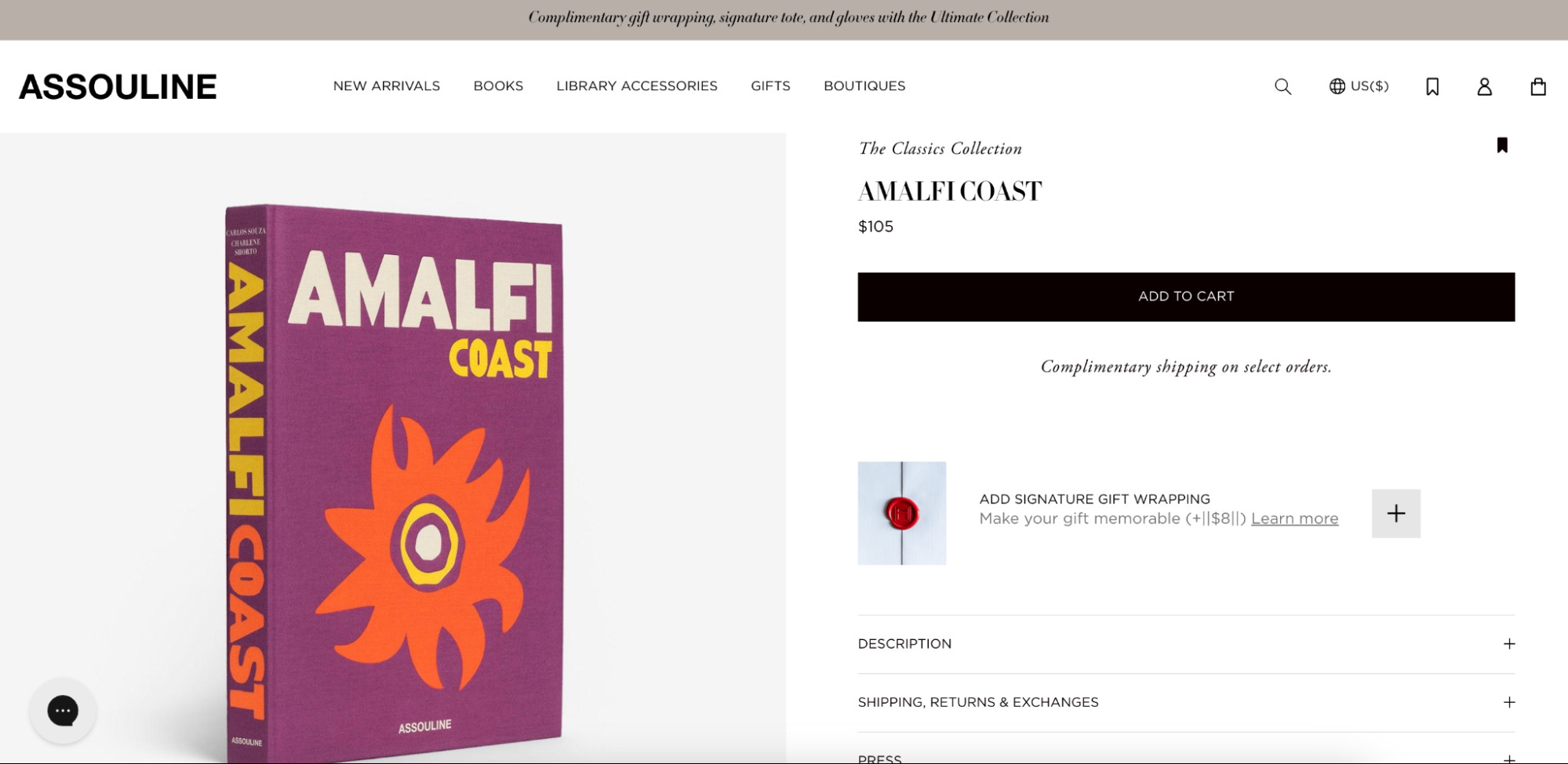 Photobook of images taken on the Amalfi Coast.
Photobook of images taken on the Amalfi Coast.
Assouline specializes in premium photo books featuring images from popular travel destinations, demonstrating the potential for high-end photo book sales.
How to Sell Your Photography Services
Beyond stock photography and product sales, numerous business opportunities exist for professional photographers offering services in various niches: event coverage, fashion shoots, product photography, and more.
List your services on freelance directories like Fiverr and Upwork to reach potential clients. Consider local networking and virtual client meetings via video chat to expand your client base.
Networking tips for selling photography services:
- Carry Business Cards: Always have business cards readily available for networking opportunities. Utilize Shopify’s free business card generator to create professional cards.
- Optimize LinkedIn Profile: Enhance your LinkedIn profile to showcase your work and clearly define your primary photography service (e.g., event photography).
- Attend Networking Events: Focus on events frequented by entrepreneurs and event organizers, as they often require professional photography services.
- Build a Personal Brand: Regularly share your work on social media platforms to maintain top-of-mind awareness within your network when photography needs arise.
For service-based photography, implement a booking platform to allow clients to view your availability and schedule appointments directly.
Platforms like Setmore and SimplyBook.me offer free plans with features beneficial for photographers. If using Shopify, add a scheduling app to enable booking directly from your website.
Pricing Strategy for Selling Photos Online
Your talent and dedication are key determinants of your earning potential when selling photos online. However, a strategic pricing approach is essential to maximize your income.
Consider these factors when developing your pricing strategy:
- Market Research: Research competitor pricing and directly ask your target market about their price expectations for your photos.
- Profit Margins: Account for photography expenses, including equipment, website hosting, and marketing budgets, to ensure profitable pricing.
- Usage-Based Pricing: Differentiate pricing based on license type. Exclusive licenses command higher prices than non-exclusive licenses.
- Offer Discounts: Utilize discounts and promotions to incentivize purchases, attracting new customers and rewarding loyal clients.
- Product Bundles: Create bundled offerings of related images at discounted prices to increase average order value. For example, offer a bundle of five beach-themed images at a reduced price compared to individual image purchases.
Legal Primer for Selling Your Photos Online
Navigating the legal aspects of selling photography, particularly rights and licenses, is crucial for protecting your work and ensuring compliance.
This overview provides broad definitions of key legal terms but is not a substitute for professional legal advice.
Glossary of Legal Terms for Selling Photos Online
- Editorial Use: Permission to use photos in blogs, newspapers, magazines, and other publications for informational or journalistic purposes.
- Commercial Use: Permission to use photos in marketing and advertising to promote products or services.
- Retail Use: Permission to use photos to create physical products for sale, including prints, posters, and merchandise featuring the image. Often considered within commercial use, but can be distinct.
- Exclusive Use: The license buyer is granted sole and exclusive rights to use the photo, preventing others from licensing it.
- Non-Exclusive Use: Multiple individuals or entities can purchase licenses to use the photo, typically at a lower price than exclusive licenses.
- Public Domain: Photos with no copyright restrictions, freely usable for commercial, editorial, and personal purposes. US federal government works often fall into this category.
- Creative Commons: Conditional usage of your work is permitted based on specified restrictions. Attribution to the creator is often required. Creative Commons provides tools to generate license badges.
- Royalty-Free: License buyers pay a one-time fee for unlimited usage duration and unlimited number of uses. Common and typically lower-priced due to non-exclusivity.
- Rights-Managed: A one-time license is purchased for specific, restricted use. Additional licenses are required for any further use.
- Right of Publicity: Subjects in your photos possess rights regarding their image, especially for commercial use. Obtain explicit permission from subjects for commercial photo sales to avoid legal issues.
Addressing Photo Theft
Content theft is a common online issue.
Watermarking your digital images before selling them online provides a protective measure against unauthorized use. Apply watermarks in Photoshop or use watermark generator tools.
Subtle corner watermarks minimize visual impact, while larger, semi-transparent watermarks offer stronger theft deterrence.
If photo theft occurs, a cease and desist request is often effective. Alternatively, send an invoice to the infringing party for unauthorized photo usage. Combining both approaches can be persuasive, offering a choice between payment and image removal.
Always strive to receive credit for your work, even for editorial use. Backlinks to your portfolio site enhance website traffic and improve search engine optimization, boosting your online visibility.
Shopify provides solutions for businesses of all sizes, from individual photographers to large retailers. Explore plans and pricing to find the right fit for your photography business.
Read More
How to Sell Photos Online FAQ
What is the best way to sell photographs?
Selling photographs as stock images on third-party websites like iStock, Shutterstock, or Alamy is a highly effective method. Stock sites offer ease of use, broad market reach, and cost-effective entry points.
Where can I sell my photos online for money?
- Alamy
- 500px
- Shutterstock
- Getty Images
- iStock
- Stocksy
- Picfair
- Adobe Stock
- Envato Elements
- Unsplash
How do you make money from stock photography?
Stock photography websites act as agencies, selling licenses for your uploaded images. Clients license individual images for a set price, and you, as the photographer, receive a royalty payment from each sale.

